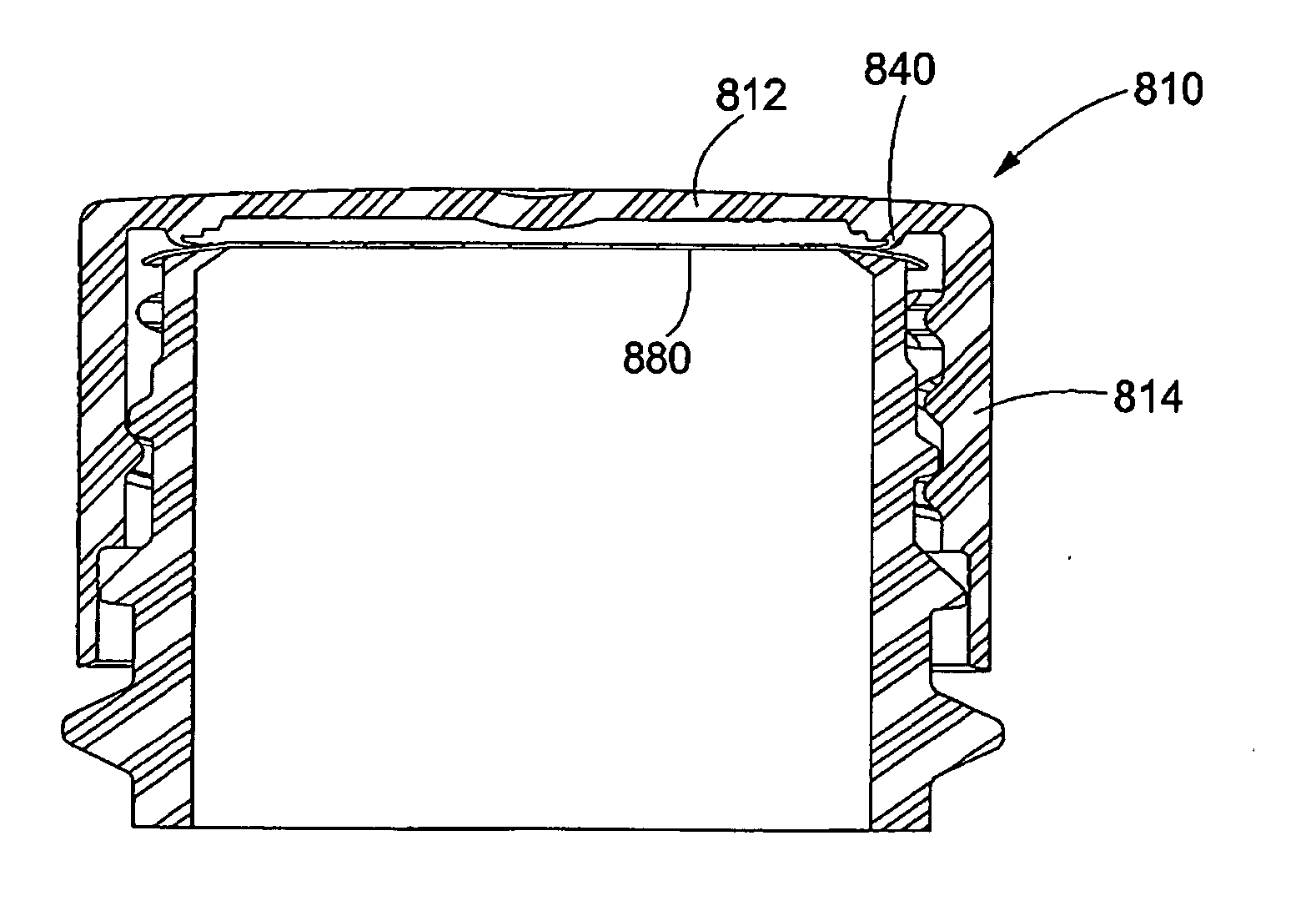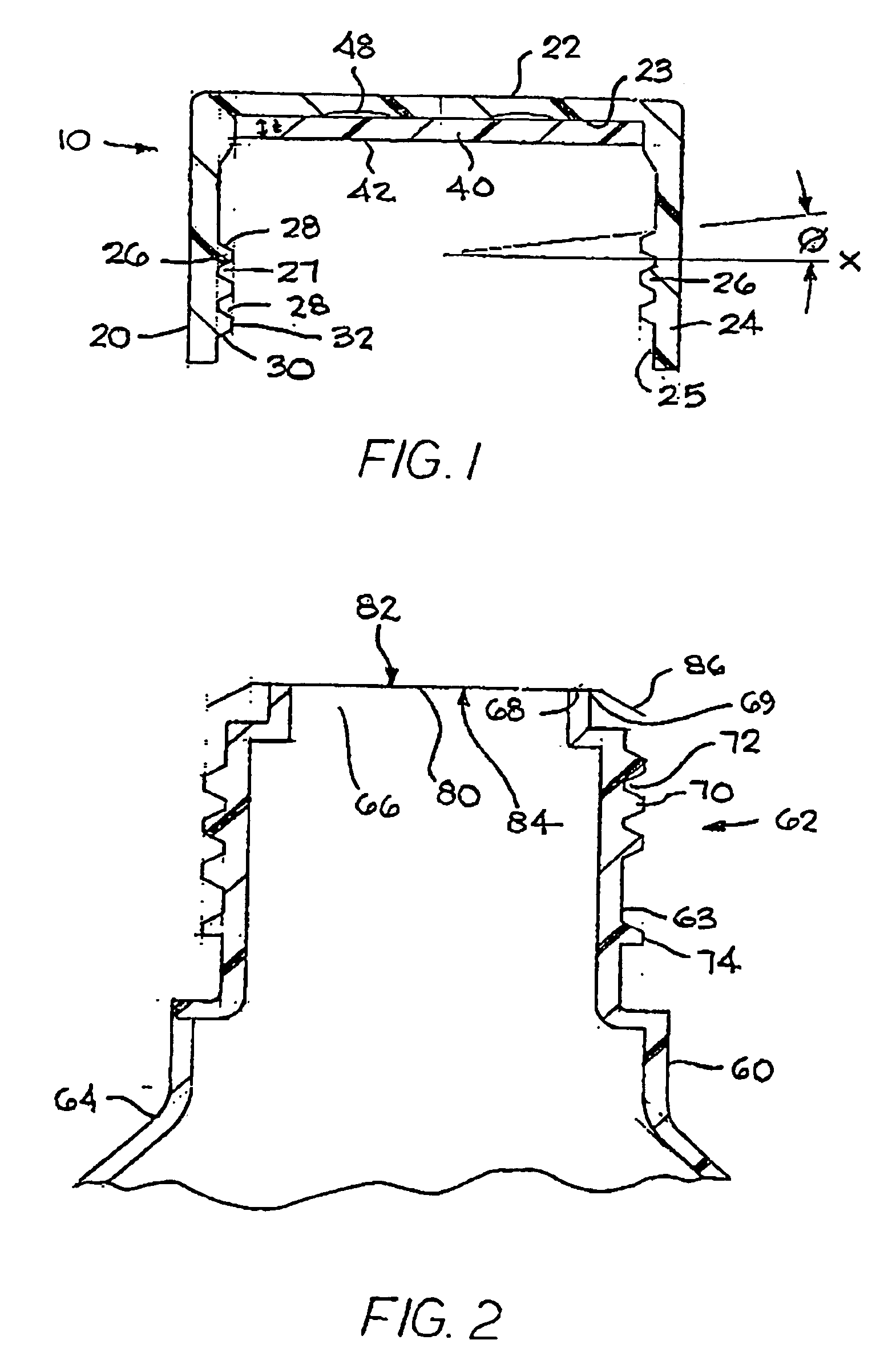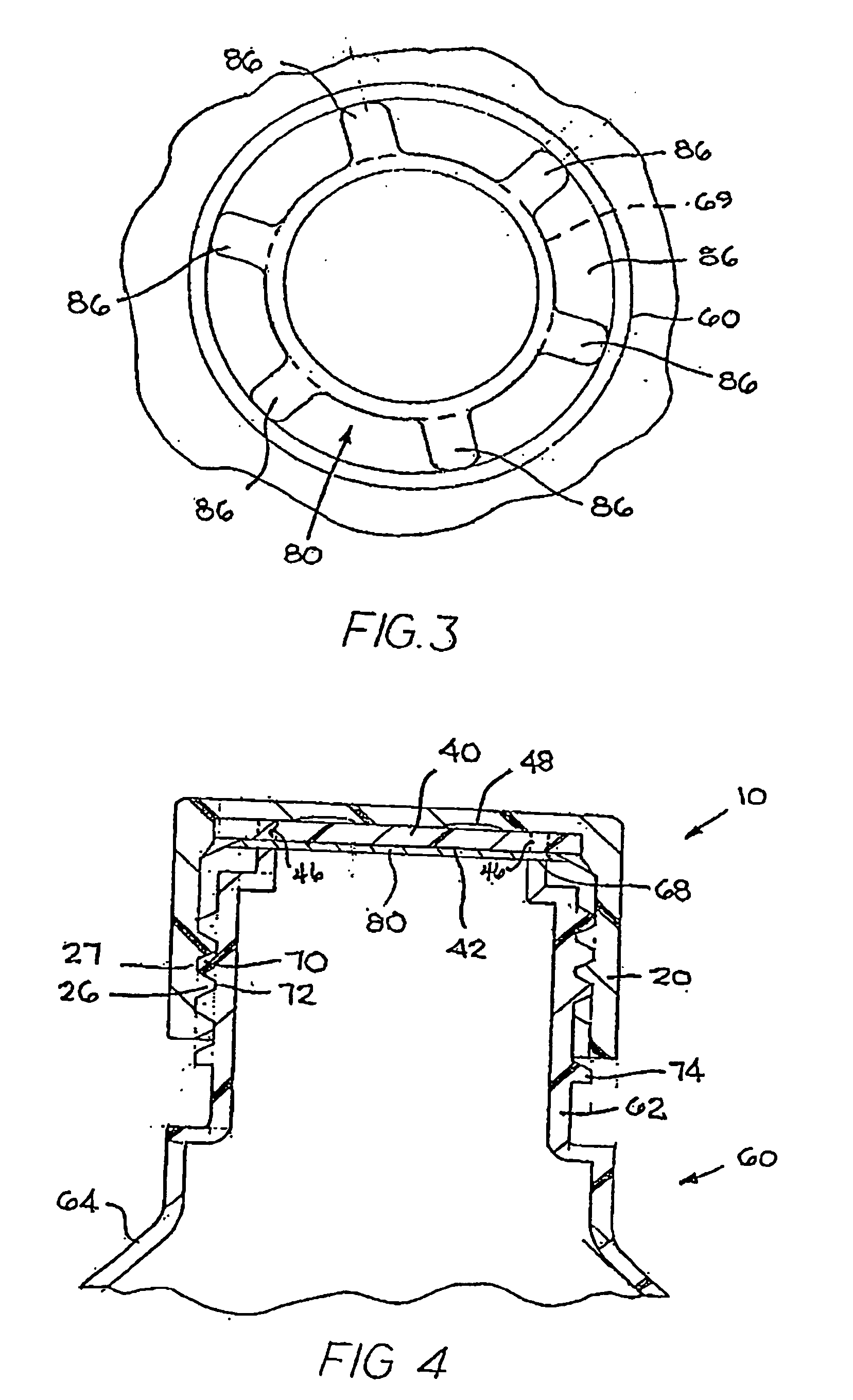Closure for a Retort Processed Container Having a Peelable Seal
a technology of retort processing and closure, which is applied in the direction of sealing, caps, liquid handling, etc., can solve the problems of reducing the rate at which the product will spoil and prolonging the shelf life of the product, and the material commonly used for stand-up, and reclosable containers such as plastic bottles, tend to soften and distort during retort processing, so as to prevent seal separation or leakage, and the effect of pressur
- Summary
- Abstract
- Description
- Claims
- Application Information
AI Technical Summary
Benefits of technology
Problems solved by technology
Method used
Image
Examples
Embodiment Construction
[0029] The present invention is for a closure for a container that has a peelable seal wherein the sealed container is sterilized using a retort process. The closure provides a means for maintaining an effective pressure against the seal to prevent seal separation or leakage as the sealed container is subjected to the temperature and pressure deviations of the retort process. The closure and container depicted in the various Figures is selected solely for the purpose of illustrating the invention. Other and different closures, containers, or combinations thereof, may utilize the inventive features described herein as well.
[0030] Reference is first made to FIGS. 1-4 in which a closure constructed in accordance with the present invention is generally noted by the character numeral 10. The closure 10 includes a cap 20 and a liner 40. As generally shown in FIG. 1, the cap 20 includes a top 22, a skirt 24 depending from the top 22, and at least one thread 26. The top 22 and skirt 24 hav...
PUM
 Login to View More
Login to View More Abstract
Description
Claims
Application Information
 Login to View More
Login to View More - R&D
- Intellectual Property
- Life Sciences
- Materials
- Tech Scout
- Unparalleled Data Quality
- Higher Quality Content
- 60% Fewer Hallucinations
Browse by: Latest US Patents, China's latest patents, Technical Efficacy Thesaurus, Application Domain, Technology Topic, Popular Technical Reports.
© 2025 PatSnap. All rights reserved.Legal|Privacy policy|Modern Slavery Act Transparency Statement|Sitemap|About US| Contact US: help@patsnap.com



